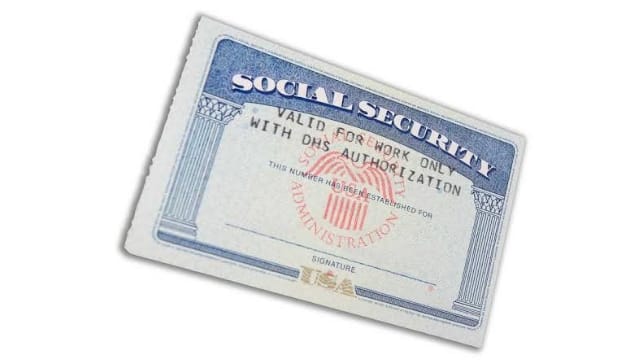The US government recently passed a $2 trillion stimulus package to help the economy recover from the effects of the coronavirus pandemic. This is the largest stimulus package in US history, and it has been met with both praise and criticism. But how does the US stimulus package compare to other countries?
The US stimulus package is the largest in the world, but it is not the only one. Many countries have implemented their own stimulus packages to help their citizens and businesses during this difficult time. The UK, for example, has implemented a £330 billion package, while the European Union has approved a €540 billion package.
When it comes to the size of the stimulus package, the US is far ahead of other countries. The US stimulus package is more than double the size of the UK’s and more than four times the size of the EU’s. This is largely due to the size of the US economy, which is the largest in the world.
However, when it comes to the amount of money spent per capita, the US is not as far ahead. The US stimulus package is estimated to cost around $6,000 per person, while the UK’s package is estimated to cost around $4,000 per person and the EU’s package is estimated to cost around $2,000 per person.
Overall, the US stimulus package is the largest in the world, but it is not the only one. Other countries have implemented their own packages, and when it comes to the amount of money spent per capita, the US is not as far ahead as one might think. It is important to remember that the US stimulus package is only one part of the global response to the coronavirus pandemic, and that other countries are also taking steps to help their citizens and businesses.
The United States has the greatest economy in the world, so the fact that it invested 27% of its gross domestic product (GDP) on stimulus may not come as much of a surprise to you. But how does that stack up against the standards of other nations?
How much did other industrialized countries have to put into their economies in order to keep them afloat during the pandemic that swept the world?
Spending on economic stimulus programs by developed nations
According to TaxFoundation.org, the following table presents the percentage of each country’s GDP that has been spent on economic stimulus programs in each of these 10 nations from the beginning of the COVID-19 pandemic:
COUNTRY PERCENT OF GDP SPENT
Singapore 29 percent
27 percent of the United States
Slovenia 25 percent
Latvia 25 percent
Lithuania 23 percent
Sweden 23 percent
Finland 21% of the total
21 percent of the Netherlands
Germany 20 percent
Luxembourg 20 percent
Safety nets for the community
One of the likely explanations for why other countries spent less money than the United States did is that the majority of these countries already had robust social safety nets in place when COVID-19 was passed.
What to Do if You Don’t Get Your Stimulus Check?
On the other hand, as the pandemic progressed, it became clear how many people in the United States required assistance from their communities.
The federal government did not begin providing stimulus checks, eviction moratoriums, prolonged unemployment benefits, an increased Child Tax Credit, and other short-term measures until after COVID-19 had already caused hospitals to become overcrowded and caused companies to close their doors.
The repercussions
Studies reveal that the United States is towards the top of the list when it comes to the amount of money spent on stimulus programs. On the other hand, this might be due to the fact that the United States typically allocates such a modest percentage of its GDP to funding for social services.
We looked at a paper that was published by the Cuny School of Labor and Urban Studies six months before the COVID-19 pandemic began to spread so that we could have a better understanding of how social safety nets may have helped save money in other nations throughout the crisis. This is what we discovered.
Senior citizens
There is a poverty rate of 22.9 percent among all elderly persons in the United States who are 65 years old or older. The rate of older citizens living in poverty is 3.1 percent in both Denmark and the Netherlands.
The rate currently stands at 9.6 percent in Germany. Because there are so many elderly people in the United States who live in poverty, living got even more challenging as shortages developed and local businesses went out of business.
The fact that so many Americans continue to be gainfully employed after the age of 65 is another indication of how difficult it may be for seniors to make ends meet in the United States.
Only 3 percent of French seniors and 7 percent of Germans, Danes, and Dutch seniors continue to work into their late 60s, in contrast to the 19 percent of senior citizens in the United States who are working at age 65 or later.
The social safety nets that were established by the governments of those countries provided residents with some degree of protection from the severe financial repercussions that were caused by the global pandemic.
As a consequence, the governments of those countries did not have to spend as much money when COVID-19 struck their territories.
Women
It’s possible that some single mothers and working mothers in other nations had an easier time making ends meet than they did in their own. This is due to the fact that the gender pay gap, which is the difference between what men and women earn for the same work, is significantly less in the majority of developed countries than it is in the United States.
For example, the salary disparity between men and women in Denmark is only one-third of what it is in the United States; as a result, many Danish women have more money to put away in savings. Only Japan among the developed countries analyzed has a pay difference that is significantly greater.
Unemployment
Although there may have been plenty of partisan grumbling emanating from the United States Capitol regarding the increased unemployment element of the American Rescue Plan, figures reveal that the United States is not exactly showering money down on people who are unemployed.
The Real Story Behind People Receiving Social Security Benefits: Is the Fourth Stimulus Payment Coming?
Take a look at the following illustration to get an idea of how much money other nations were already spending on unemployment compensation prior to the pandemic.
SPENTING AS A PERCENTAGE OF A COUNTRY’S GDP
1.62 percent for France; 1.46 percent for the Netherlands; 1.32 percent for Germany
Switzerland makes up 0.91 of the total.
0.81 percent Australia 0.65 percent Canada
0.62 of one percent inside the United States
0.19 of a percent for the United Kingdom
0.17 percent Japan 0.17 percent
The Cuny School of Labor and Urban Studies is the source of these statistics.
It’s possible that by looking at these instances, you’ll get a better idea of how extensive the social safety nets are in different nations.
Paid maternity leave is provided to new mothers in Germany for 58 weeks, mothers in Canada for 52 weeks, and mothers in Denmark for 50 weeks so that they can spend time with their newborn children.
The United States is one of the few countries in the world that does not offer the benefit of paid leave to new mothers.
Unemployment:
Before the COVID-19 pandemic struck, unemployed Americans living in the United States were eligible to collect unemployment payments ranging from $215 to $543 per week. Germany provides a jobless benefit that is equal to sixty percent of the recipient’s former wage for a period of one year. This benefit is part of Germany’s social safety net. For a period of two years, the French government will pay up to 75 percent of the employee’s previous salary.

In contrast to the situation in the United States, where around 9 percent of the population does not have health insurance, all citizens of European countries are required to have access to healthcare. Payroll taxes and possibly other levies are what pay for this coverage.
The Real Story Behind People Receiving Social Security Benefits: Is the Fourth Stimulus Payment Coming?
According to PBS, when it comes to expenditure on all types of disability, the United States ranks 30th out of the 36 nations that are members of the Organization for Economic Co-operation and Development (OECD).
The list is extensive, beginning with free early childhood education and continuing with basic pensions for senior citizens. While it can put a strain on a country’s resources to provide such a comprehensive safety net, it’s likely because of these pre-existing programs that other nations were able to get through the epidemic without having to spend a bigger percentage of their GDP on healthcare.



